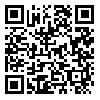Volume 3, Issue 6 (2017)
QHTS 2017, 3(6): 85-123 |
Back to browse issues page
Download citation:
BibTeX | RIS | EndNote | Medlars | ProCite | Reference Manager | RefWorks
Send citation to:



BibTeX | RIS | EndNote | Medlars | ProCite | Reference Manager | RefWorks
Send citation to:
Critical Study of Emphasis Devices of Ablative Absolute and Turning Synonyms in the English Translations of the Holy Qur'an Based on House Textual Theory
(Case of Study: Shakir, Irving, Hilāli – Khān Translations). QHTS 2017; 3 (6) :85-123
URL: http://qhts.modares.ac.ir/article-10-10904-en.html
URL: http://qhts.modares.ac.ir/article-10-10904-en.html
Abstract: (9302 Views)
Special literature of the Qur'an leads to difficulty of its translation. Study of emphatic devices as a grammar technique in Qur'an translation reveals their unbalanced equivalents based on exist theories of translation science. Because of the position of this technique in source language, assessment of ablative absolute and turning synonyms based on House textual theory can lead to their precise translation. Study of aforementioned emphasis devices; in Shakir, Irving and Hilali-Khan translations shows some Inequalities in comparing with source language like; imprecise equivalence of ablative absolute not reflecting of its emphatic structure and qualification and unbalanced grammar translation of turning synonyms (by vāv). But their translations are equivalent in some cases like; making emphatic structure equivalence by parallel structure in translation of turning synonyms (by vāv and Lā). Though felicitous miracle of the Qur'an, linguistics differentiates and the translator role, himself, have effective role about balanced or unbalanced translation of these emphatic devices, but based on linguistic position of these technique in source language, the House overt translation method can be considered as better method in this field.
Keywords: Qur'an Englhsh Translation, Ablative Absolute, Turning Synonyms, House Textual Theory, Lexical and Grammar Balance
Received: 2016/09/11 | Accepted: 2016/12/4 | Published: 2017/02/16
| Rights and permissions | |
 |
This work is licensed under a Creative Commons Attribution-NonCommercial 4.0 International License. |







